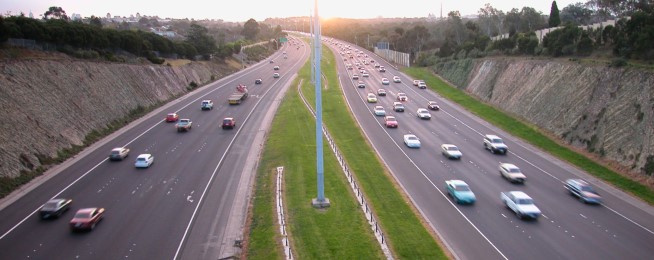It is not only people suffering from the COVID-19 chokehold on society, cars are getting lonely too, poor things.
Transport data for Melbourne is showing a significant drop in traffic as citizens increasingly comply with stay-at-home restrictions and limit travel to essential trips only.
Australia’s national transport research organisation, the Australian Road Research Board (ARRB), is reporting that congestion on Melbourne’s Monash Freeway—usually a snarling mess of near-immobile cars and trucks—is down between 88% and 95% for weekday peak periods.
But fascinatingly, this has been achieved with just 28 per cent fewer vehicles, while heavy vehicle freight movements are pretty much the same.
This suggests that congestion could actually be much easier, and cheaper, to fix than governments think. Most everyday travel is not essential, it is discretionary.
Trimming driving by 30 per cent ought to be achievable as roughly 20 per cent of car trips are redundant: they either don’t need to be taken at all, or they can be combined with another trip.
With more active transport options, and improved public transport, at least another 10 per cent of drivers could switch.
That would give us another 20 years of free-flowing freeways without having to spend billions of dollars more just to accommodate drivers who don’t need to be driving.
ARRB also analysed foot traffic data collected by the City of Melbourne that showed a massive drop-off of up to 83% in major Melbourne CBD areas.
ARRB believes these impacts will be similar in most major capital cities of Australia following COVID-19.
ARRB chief executive officer Michael Caltabiano said: “The COVID-19 shutdown offers a critical opportunity for Victoria to understand and deal with its transport issues before life eventually returns to normal.”
“The transport data gives us some clear insight, but the big question is where to from here given what this data is showing us.
“We need to take this opportunity to reimagine now what a post-COVID-19 back-to-work should look like. Do we take the opportunity to change the way in which are freeways are used?
“Can we reimagine the work people do? Perhaps work from home staggered across the workforce for one or two days a week.
“There is also now an opportunity to better understand the choices people make before they get back into their cars and spend hours a day on congested roads.”
Become our friend
Find out more about Bicycle Network and support us in making it easier for people to ride bikes.


